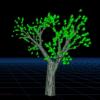[size="5"]Intent
[bquote]Update a Model's state based on circumstance.[/bquote]
[size="5"]Problem
[bquote]Controllers implement the rules of a game. They determine how objects behave given a circumstance, and isolate these rules from the objects themselves. This makes both the controllers and models more reusable and maintainable.[/bquote]
[size="5"]Solution
[bquote]Controllers relate to Models and Views as follows: Controllers are often associated with only one model instance. For example: animation, AI, pathfinding. In these cases the controller instance is usually created and destroyed synchronously with the associated model.
Some Controllers inherently have more than one associated Model. For example: multi-body physics, target tracking (heat seeking missiles, etc). These controllers often maintain Model references which must be notified / garbage collected when the referenced object dies. This is called the "model death problem". The creation and deletion of these multi-owner controllers is usually done by some primary owner.
Controllers are often implemented as "processes" in a mini cooperative multi-tasking kernel. (See Mini-kernel) but may also be implemented as "hard wired updates" in the main loop, especially for large multi-model controllers like physics.
Some simple Controllers are stateless. For example, a homing missile controller may just compute the direction to the target and apply force as necessary. Most controllers, however, are state-aware. For example, an animation tracks progress through the animation and changes states accordingly; e.g. if (frame > 10) state = STOP_WALKING.
State-aware controllers often become significantly complicated with large switch statements. (See State Machine Controller.)[/bquote]
[size="5"]Structure- Models are read-writeable by Controllers.
- Controllers are created and destroyed by Models, but are otherwise invisible.
- Views are invisible to Controllers and vice-versa.
Some Controllers inherently have more than one associated Model. For example: multi-body physics, target tracking (heat seeking missiles, etc). These controllers often maintain Model references which must be notified / garbage collected when the referenced object dies. This is called the "model death problem". The creation and deletion of these multi-owner controllers is usually done by some primary owner.
Controllers are often implemented as "processes" in a mini cooperative multi-tasking kernel. (See Mini-kernel) but may also be implemented as "hard wired updates" in the main loop, especially for large multi-model controllers like physics.
Some simple Controllers are stateless. For example, a homing missile controller may just compute the direction to the target and apply force as necessary. Most controllers, however, are state-aware. For example, an animation tracks progress through the animation and changes states accordingly; e.g. if (frame > 10) state = STOP_WALKING.
State-aware controllers often become significantly complicated with large switch statements. (See State Machine Controller.)[/bquote]
[bquote]Not available at this time.[/bquote]
[size="5"]Issues and Risks
[bquote]None at this time.[/bquote]
[size="5"]Related Patterns
[bquote]Mini-kernels aggregate Controllers, giving each controller some time to work. Controllers modify Model's states.
Views may translate Model state with an Appearance Map.
Complicated state-aware controllers may use a Controller State Machine.[/bquote]
Views may translate Model state with an Appearance Map.
Complicated state-aware controllers may use a Controller State Machine.[/bquote]




